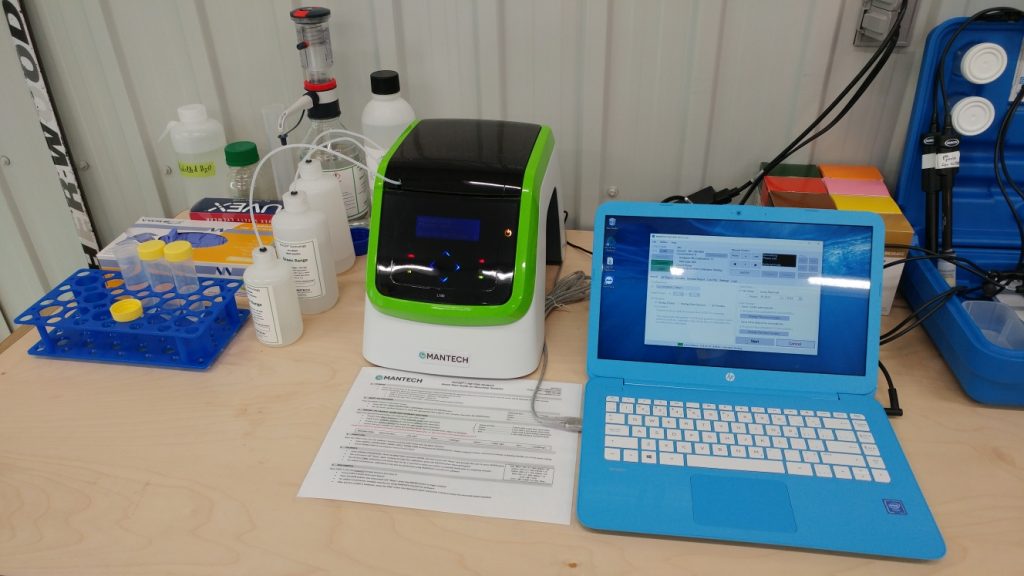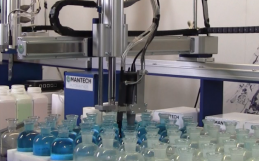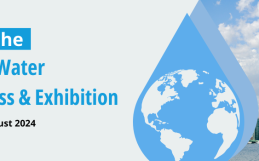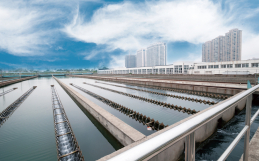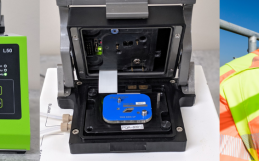On August 29, 2018, a Benchtop PeCOD Analyzer was installed at the newly constructed Canadian High Arctic Research Station (CHARS) in Cambridge Bay, Nunavut. The PeCOD will be used as a tool for water quality/contamination monitoring of local watersheds in Nunavut, including greywater, lake water, groundwater, and municipal-treated drinking water.
Polar Knowledge Canada (POLAR) is responsible for advancing Canada’s knowledge of the Arctic, strengthening Canadian leadership in polar science and technology, and promoting the development and distribution of knowledge of other circumpolar regions, including Antarctica. POLAR operates the CHARS campus and conducts world-class cutting edge Arctic research out of this extraordinary facility. The CHARS campus will provide year-round presence supporting the community and complement the network of research facilities across Canada’s North.
Terragon Environmental first introduced the PeCOD to CHARS in 2017 while supporting the successful installation of their proprietary water and wastewater treatment technology. The PeCOD enabled quick, on the spot natural organic matter (NOM) testing leading to effective decision making, treatment optimization, protection of the environment and protection of public health. Prior to the PeCOD, samples were collected, put on plane and results returned weeks later.
An additional advantage is that PeCOD measures reactivity (oxidation state of carbon or oxidizability), which has proven to provide improved sensitivity and range of measurement versus Total Organic Carbon (TOC) and UV254 based analyzers. PeCOD is often dubbed: TOC “Optimized”. The PeCOD investment by CHARS was funded through Indigenous and Northern Affairs Canada (INAC). A Terragon representative installed the unit in August 2018 – thank you Terragon!
A UV254 analyzer could also be employed, however, the results were not trusted as the technology is well known to be matrix specific and frequent correlation to laboratory methods were required. In many cases, events are not detected due to non-absorbance, fouling and interferences. The TOC also could have been used, however, it is complex to operate and TOC analyzers “don’t give you the full picture of your water, and the cost of a dedicated TOC analyzer can be prohibitive.” “TOC on its own sheds no light on the oxidizability of the measured carbon or the amount of oxygen needed for its biodegradation.” (Quotes from a TOC manufacturer). The PeCOD is simple, results are generated in 3-7 min, results are empirical and trusted, and the investment cost is significantly lower. A description about the difference between the PeCOD and TOC parameters is found here.
The COD by dichromate method with high heat acid digestion was not allowed on-site due to the hazardous chemicals. As is evident from the PeCOD picture, it can be set-up anywhere, therefore, personal protective equipment (PPE) and a laboratory are not required. The CHARS team can analyze 24/7 as required. Event detection and control, including taste and odor, are optimized.
The PeCOD method conforms to ASTM International Method D8084 for fresh and treated drinking waters. The PeCOD parameter has been included in Health Canada’s “Natural Organic Matter in Drinking water” Guidance Document to be released in the Fall of 2018. Monitoring the influent and effluent is crucial for optimizing treatment, saving money, and maintaining compliance. The fast analysis time, user-friendly method, low cost and elimination of hazardous waste allows researchers and operators to utilize the PeCOD anywhere.

